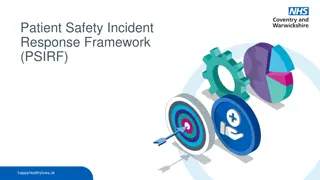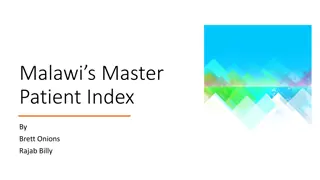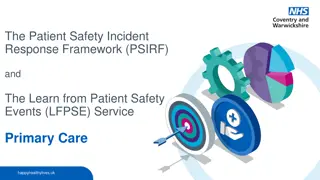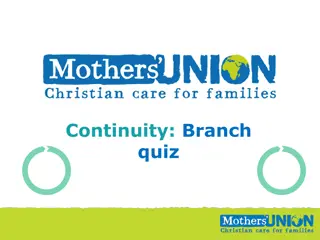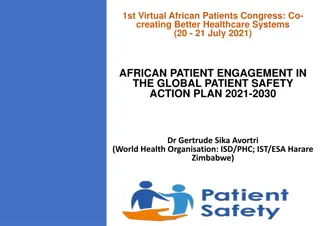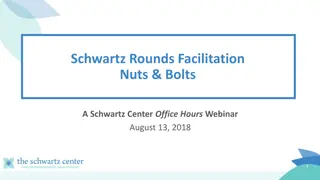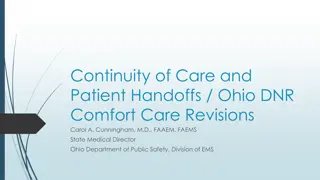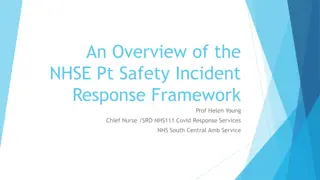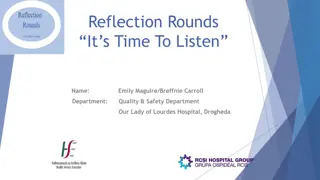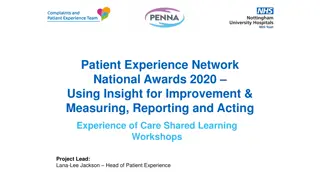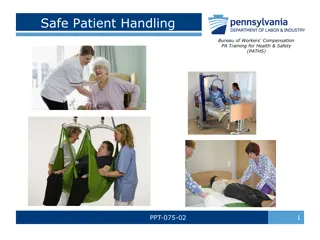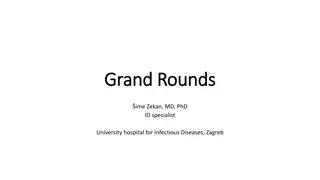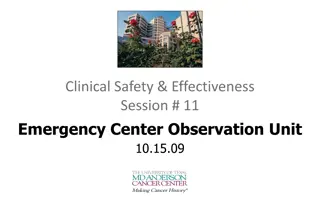Enhancing Patient Safety Through M&M Rounds: A Detailed Overview
M&M Rounds, focusing on identifying errors, adopting the Ottawa M&M model, and promoting a standardized approach, aim to enhance patient care quality and safety outcomes. Upholding strict confidentiality, these rounds involve cases with adverse outcomes, preventability, and crucial lessons for learning. By addressing system factors and cognitive biases, M&M Rounds seek to improve clinical practices and mitigate risks effectively within healthcare settings.
Download Presentation

Please find below an Image/Link to download the presentation.
The content on the website is provided AS IS for your information and personal use only. It may not be sold, licensed, or shared on other websites without obtaining consent from the author.If you encounter any issues during the download, it is possible that the publisher has removed the file from their server.
You are allowed to download the files provided on this website for personal or commercial use, subject to the condition that they are used lawfully. All files are the property of their respective owners.
The content on the website is provided AS IS for your information and personal use only. It may not be sold, licensed, or shared on other websites without obtaining consent from the author.
E N D
Presentation Transcript
M&M Rounds M&M Rounds Background Background January 2024
Confidentiality Statement Confidentiality Statement We need to protect the privacy of patients These rounds are strictly confidential No patient initials, dates, times or names of staff involved will appear in this presentation. Goal of M&M Rounds To improve the quality of care and patient safety outcomes
M&M rounds M&M rounds Historically Identify errors Punitive process The Ottawa M&M model Standardized approach Learning opportunity Protected discussion Medical education Quality improvement Risk management
M&M in Island Health M&M in Island Health Pilot project across Island Health Following the Ottawa M&M model The Health Authority Medical Advisory Committee (HAMAC) subcommittee to support a standardized approach to learn from clinical experiences and raise quality and safety issues through the organization
Cases appropriate for M&M rounds Cases appropriate for M&M rounds Require all 3 of the following: 1. Adverse outcome such as death, disability, harm, injury, or a near miss (potential harm avoided for example, a patient given incorrect medication due to mislabeling of syringe potential for harm but the patient ultimately wasn t affected) 2. Preventable 3. Lessons to be learned about cognitive biases and/or system issues In this model, cases are presented by those who were involved directly, not reviewed by a third party. This format is different from critical incident analysis framework, although may be used as an adjunct.
System factors System factors System-level issues often relate to problem(s) beyond just the individual clinician or team, and pertains to how your clinical setting operates: Patient factors Skill-set errors Task-based errors Personal impairment Teamwork failure Local environmental contributors Hospital-wide contributors Hospital administration contributors External contributors
Cognitive Bias Cognitive Bias Clinical decision-making is an extremely complex process, and healthcare professionals often develop adaptive mechanisms (referred to as heuristics) because we are faced with repeated similar experiences in a busy clinical environment. Type 1 subconscious: fast, intuitive Type 2 - analytical slow Goal: become aware of how we use our cognitive systems, to hopefully mitigate biases going forward.
Typical M&M case structure Typical M&M case structure For a 30-minute M&M presentation: 10 minutes for review of the case and state of evidence on current management 10 minutes for case analysis in terms of cognitive and system issues 10 minutes for discussion, review of bottom lines and consensus on potential action items
Section 51 Protection Purpose is for learning and improvement within hospital, mental health facility or ambulance during transfer Conducted under approved council/committee Opinion is protected Fact isnotprotected
CME CME Attending M&M rounds can be claimed as a CME activity RCPSC MOC Section 1 credits for group learning (not accredited) MOC Section 3 credits for improvement activities CCFP Mainpro+
What next Bottom Line/Action item slide to be forwarded to HAMAC M&M rounds working group. Data will be extracted and themed and a report provided to Health Authority Medical Advisory Committee to highlight issues identified for ongoing reporting and prioritization for potential HAMAC action Local bottom line/action items to be forwarded to the most appropriate Clinical Governance structure, as identified for section 51 protection. This may be a local-level Clinical Governance structure or C.A.R.E. Network committee Feedback from clinical governance structure to be brought back to the M&M group within 3 months Where applicable, local actions to be initiated Bottom Line/Action item slide to be shared with all M&M group members Feedback to be brought to the M&M group within 3 months
Sharing recommendations A case is discussed at M&M Rounds: cognitive bias and/or systems issues are identified. STEP ONE: Case Discussed at M&M Rounds The group decides collaboratively what changes need to occur. Local change is actioned where possible. STEP TWO: Bottom line/Action items The Facilitator shares bottom line/action items: 1. With group members 2. Via the electronic data repository 3. Relevant local-level clinical governance and/or C.A.R.E. Network structure STEP THREE: Report out STEP FOUR Feedback Feedback is provided by quality committees and HAMAC group within 3 months.


